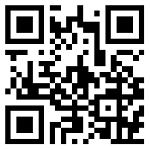提醒:点这里加小编微信(领取免费资料、获取最新资讯、解决考教师一切疑问!)
三、教学情境分析题32.【参考答案】
(1)①复习环节:
创设方法:运用图片创设情境。
作用:通过彩色小图片等直观的教具能够符合儿童形象思维占优势的学习特点,有利于儿童建立清晰、明确的概念,从而调动学生的学习兴趣,加深理解和记忆,增强教学效果。
②导入环节:
创设方法:运用多媒体创设情境。
作用:通过多媒体为学生创设丰富多彩、形象生动、妙趣横生的教学情境,可以充分调动学生的试听感官系统,激发学生学习兴趣,提高学生的认知能力。同时,还可以提高课堂的信息容量;缩短教学时间,提高教学效率;实现学生学习方式的多元化,利于优化课堂教学效果。
③呈现环节:
创设方法:运用生活素材创设情境。
作用:运用生活素材创设真实的、贴近学生生活的情境,让学生从熟悉的现实生活和体验中出发,了解和掌握知识.使学生感受到英语学习与我们的El常生活是息息相关的。有利于提高英语教学的实效。
(2)评析:首先,在整个语言学习活动中,教师在复习、导入、呈现环节分别运用图片、多媒体、生活实际素材等组织教学,为学生创设语言学习的情境,引导学生学习新词汇,发挥了其作为组织者、引导者以及创设者的作用。但是,在新课程实施中,要求教师要不断更新观念,转变角色,坚持“以学生为主体,教师为主导”,积极推行互动式、开放式的教学实践。而在案例的导入及语言呈现环节中,该教师设置的问题和活动开放性不强、互动性不高,没有为学生提供充分发挥主体性的机会,在一定程度上限制了学生的创造力,不利于充分调动学生的积极性。
四、教学设计题
33.【参考设计】
Teaching Content: This class contains some key vocabulary and target language about giving advice to people.
Teaching Objectives :
Knowledge objective
( 1 ) Key Vocabulary : tie
(2) Target Language :
If I were you, I'd wear a shirt and tie.
If I were you, I' d take a small present.
Ability objective
Students should develop their listening skills and improve their communicative competence.
Emotional objective
Students should give some directions to those who are in trouble and get into the habit of helping others.
Teaching Key Points:
(1) Listening practice
(2) Target language
Teaching Difficult Point:
Students should cultivate the ability to use the target language.
Teaching Methods :
(1) Listening to cassettes
(2) Pair work
(3) Teaching by induction
Teaching Aids :
A tape recorder, a picture of a person in a lion's cage, a projector
Teaching Procedures :
Step 1 Revision (5 minutes)
Check homework. Students talk about how to spend a large amount of money.
Invite a student to come to the front of the class and ask, if you had 100,000 yuan, what would you buy?
Students take turns answering his / her question.
(Justification: The revision will examine students' learuing effect and easily lead in the text.)
Step 2 Presentation (10 minutes)
2a
The teacher makes students' attention focus on the picture, and asks students to describe it. Help students say that the boy is going to somewhere, but he doesn't know what to wear. The girl is helping him to pick out clothes.
Then points to the list of reasons, and invite a student to read them to the class.
T: You are going to listen to a conversation between Larry, and the girl, and circle the reasons. For the first time, you only need to listen to it. For the second time, you should listen to it again and circle the reasons.
Check the answers.
(Justification : The process of this step can provide practice for students in understanding the target language in spoken conversation. )
2b
Read the instructions to the class.
Point to the list of sentences. Invite a student to read them to the class.
T: You will listen to the same conversation again. This time you are going to check the four things that Larry's sister says to him.
Play the recording again. Students listen and check the things.
Check the answers.
(Justification : The process of this step provides listening practice for students in using the target language.)
Step 3 Practice (10 minutes)
The teacher points to the list of Larry' s worries in the box, and invites a student to read them to the class. Then asks students to look back at the list of checked sentences.
Read the instructions to the class.
T: Please make conversations by using information from Activities 2b and 2c.
Ask a pair of students to demonstrate a conversation to the class.
S1 : I don't know what to wear.
S2 : If I were you, I' d wear a shirt and tie.
Get students to work in pairs. As the pairs work together, walk around the room checking the pairs' progress and giving language and pronunciation support as needed.
After all the students have a chance to play both parts, stop the activity. Ask different students to perform their conversations.
Optional activity
Ask students to write down a problem they have on a piece of paper. Have students exchange papers with one another and read the one they receive. Then ask students to write two pieces of advice they would give the other student. Ask a student to read his / her advice to the class. The rest guess the problem.
(Justification: This activity provides oral practice for students in using the target language.)
Step 4 Grammar Focus (15 minutes)
Ask different students to read the question and answer and the statements to the class.
S1 : What would you do if you won a million dollars?
S2: I'd give it to charity.
S3 : If I were you, I' d wear a shirt and tie.
S4 : If I were you, I'd take a small present.
Write them on the blackboard.
Show a picture of someone in a lion's cage on the screen by a projector. Ask students questions pointing to the picture.
T: Have you ever been in a lion's cage?
Ss : No.
T: That's right. None of us has ever been in a lion's cage. What would you do if you were in a lion's cage?
(Write the question on the blackboard.)
S1 : I 'd call for help. (Write the sentence on the blackboard.)
T: What about you?
S1 : I 'd get out fast. (Write the sentence on the blackboard. )'
Get several more examples from other students.
T: When we talk about things that haven't happened, we often use the word"would"(underline the word"would" in the question). Apostrophe "d" is the abbreviation of the word "would" (underline the abbreviation "d"in the answers).
Then underline the word "were" in the two statements.
T: When you tell someone what you would do, you use the expression if I were you.
Get all the students to read the target language on the blackboard.
Pronunciation noteWhen saying the words"would you" in phrases such as what would you doEnglish speakers often run the words together and pronounce these words as if they were spelled "wudjudu".
(Justification: Let students know the point of the grammar and the right pronunciation of words.)
Step 5 Summary and Homework (5 minutes)
Summary: In this class, we've learned the target language. I'd give it to charity and if I were you, I'd wear a shirt and tie. And we've also done much listening practice using the target language.
Homework : Write a composition entitiled"What would you do if you go abroad? ", and .share your views with other students.
(Justification: Students could consolidate what they have learned, and practice their writing ability.)
Blackboard Design:
Unit 4 What would you do?
Section A
The Second Period
Target language:
A: What would you do if you won a million dollars?
B: I'd give it to charity.
A: If I were you, I'd wear a shirt and tie.
B : If I were you, I'd take a small present.
A: What would you do if you were in a lion's cage?
B: I'd call for help.
C : I' d get out fast.
提醒:点这里加小编微信(领取免费资料、获取最新资讯、解决考教师一切疑问!)









